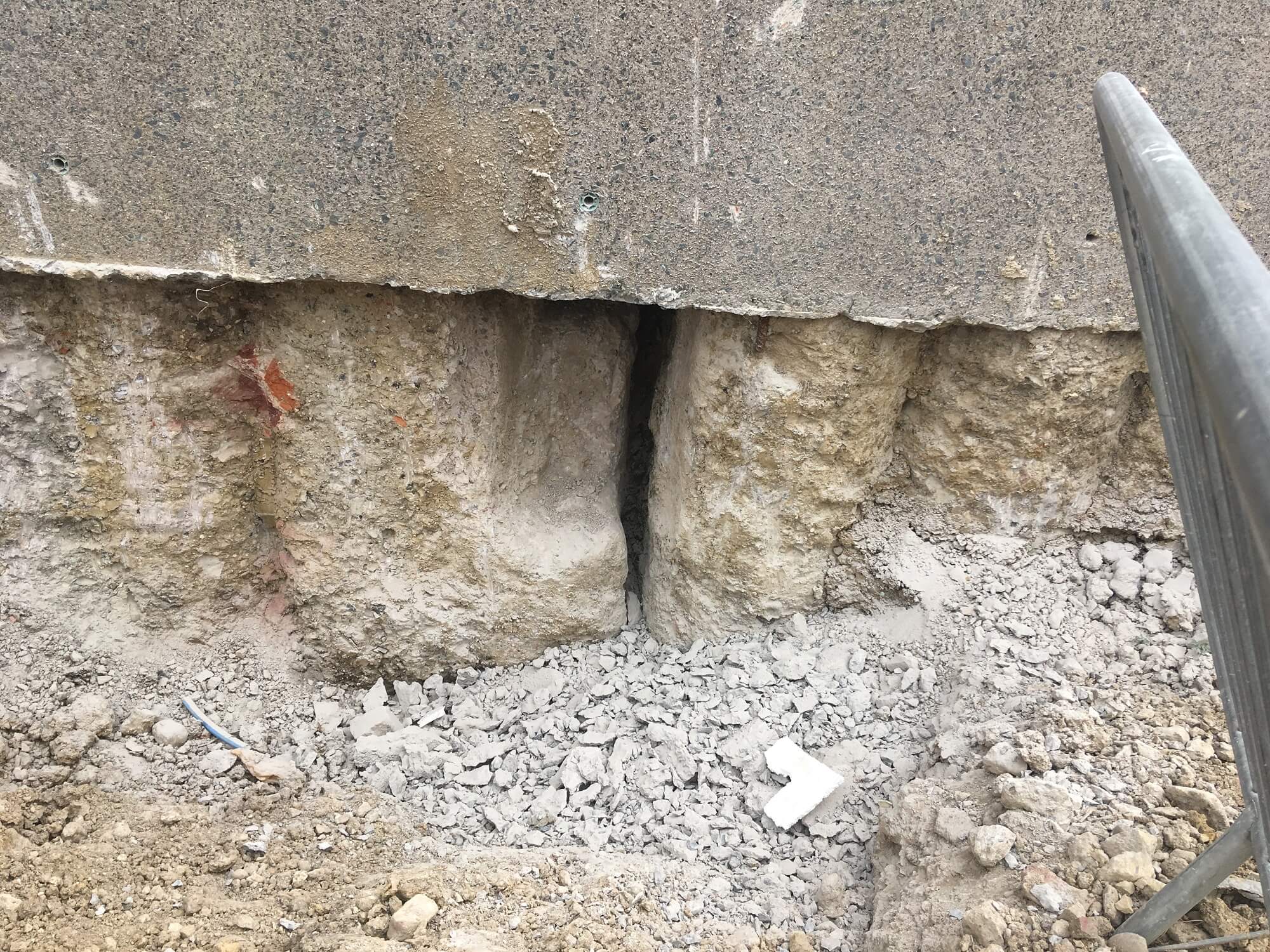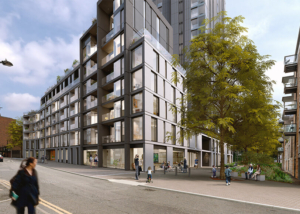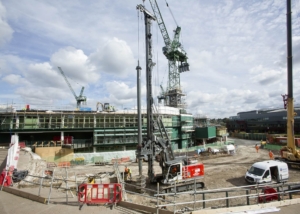PROJECT OVERVIEW
London Square, Staines-upon-Thames, is the centre piece to a major regeneration scheme in the town. When complete, the development will transform the high street with the inclusion of residential properties, a new piazza, retail and commercial space.
DESIGN AND PLANNING
Prior to Bachy Soletanche involvement in the scheme, two secant piled walls had been installed by two different contractors during separate phases. The piles at the wall interface were not interlocked and therefore a gap existed along the full vertical length of these elements at two locations. Water bearing sands and gravels were present behind the secant walls and it was essential to seal these gaps to control the water ingress during basement excavation.
During the pre-construction phase, the team offered London Square a robust solution complete with the technical expertise and experience to deliver the works.
Bachy Soletanche provided reassurance to the client by agreeing to work in partnership with the excavation contractor during the bulk dig. This ensured the team could assist with further works should any issues arise during the excavation.
The site itself was very restricted and all the plant and ancillary equipment would have to be lifted into place using the site tower crane. The selection of plant became critical due to a seven-tonne weight restriction for the crane. Bachy Soletanche worked closely with the client and attended multiple site visits prior to works commencing, in order to ensure a successful mobilisation.
DRILLING AND GROUTING OPERATIONS
The adopted solution was to drill and case two boreholes at the location of each gap, which were then sealed into the London Clay. The boreholes were 11.5m deep and 140mm in diameter. As the casing was extracted, grout was injected – using the end of casing grouting method – with grout injected under pressure at one metre stage intervals. Upon completion of the grouting, a Tube à Manchette (TaM) was installed in each borehole and the grout was allowed a period to gel.
To complete the works at each gap location, a 20mm steel injection lance was installed through the sands and gravels, using a handheld “pile type” hammer, terminating at top of the London Clay. The injection lances were positioned as close as possible along the expected length of each pile gap. Each lance was then pulled out under control and throughout this extraction process, a polyurethane resin was injected via the lance into the saturated sands and gravels. The polyurethane resin was designed to foam and expand when in contact with water.
During the injection, accurate accelerator dosage control was key to ensure the resin responded to the encountered groundwater conditions. The combination of the cementitious grout placement and polyurethane injection was intended to provide a robust barrier to groundwater flows during later basement excavation. In total 4.8m3 of cementitious grout was injected and approximately 50 litres of polyurethane resin was used at each location, not accounting for any expansion factor.
During the design phase it was decided that the TaM infrastructure would be in place during the excavation so that the team could return to site and inject cementitious grouts as required to further reduce any water flows that may occur during excavation. The work was completed ahead of schedule, allowing for the client to continue with the next phase of construction earlier than planned.






